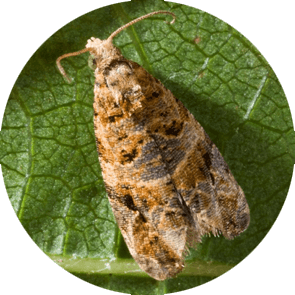


| Latin Name | Lobesia botrana |
| Common Name | European Grapevine Moth;Vine moth pheromone |
| Biology | Adult moths are active at night and are sensitive to sex pheromones, laying eggs on grape flower clusters, young fruits, or leaves. The larvae bore into grape flower clusters and fruits, causing the flower clusters to wither; the infested fruits rot and fall, affecting grape yield and quality. This pest occurs commonly in grape-growing regions, producing 3-4 generations per year. |
| Damage | This pest primarily damages grapevines. |
| Distribution Regions | Mediterranean |
| Monitoring | Pheromone lures mimic natural sex pheromones to attract male insects into specialized traps for population monitoring and suppression. As a core IPM component, monitoring enables early risk detection and targeted control. Mass trapping reduces mating opportunities to curb offspring populations. Protocols: ●Use only with matched traps. ●15-45 traps/hectare,replace/replenish every 4-6 weeks. ●Wear gloves or wash hands with detergent when switching lure types. ●Refer to trap-specific hanging instructions. |
| Recommended Traps | Delta Trap, Wing Trap |

分享您的联系信息,即可获得精准匹配的信息素解决方案。如果我们现有的产品组合缺乏最佳匹配,我们的合成化学团队将启动定制开发——从分子结构设计到规模化生产。